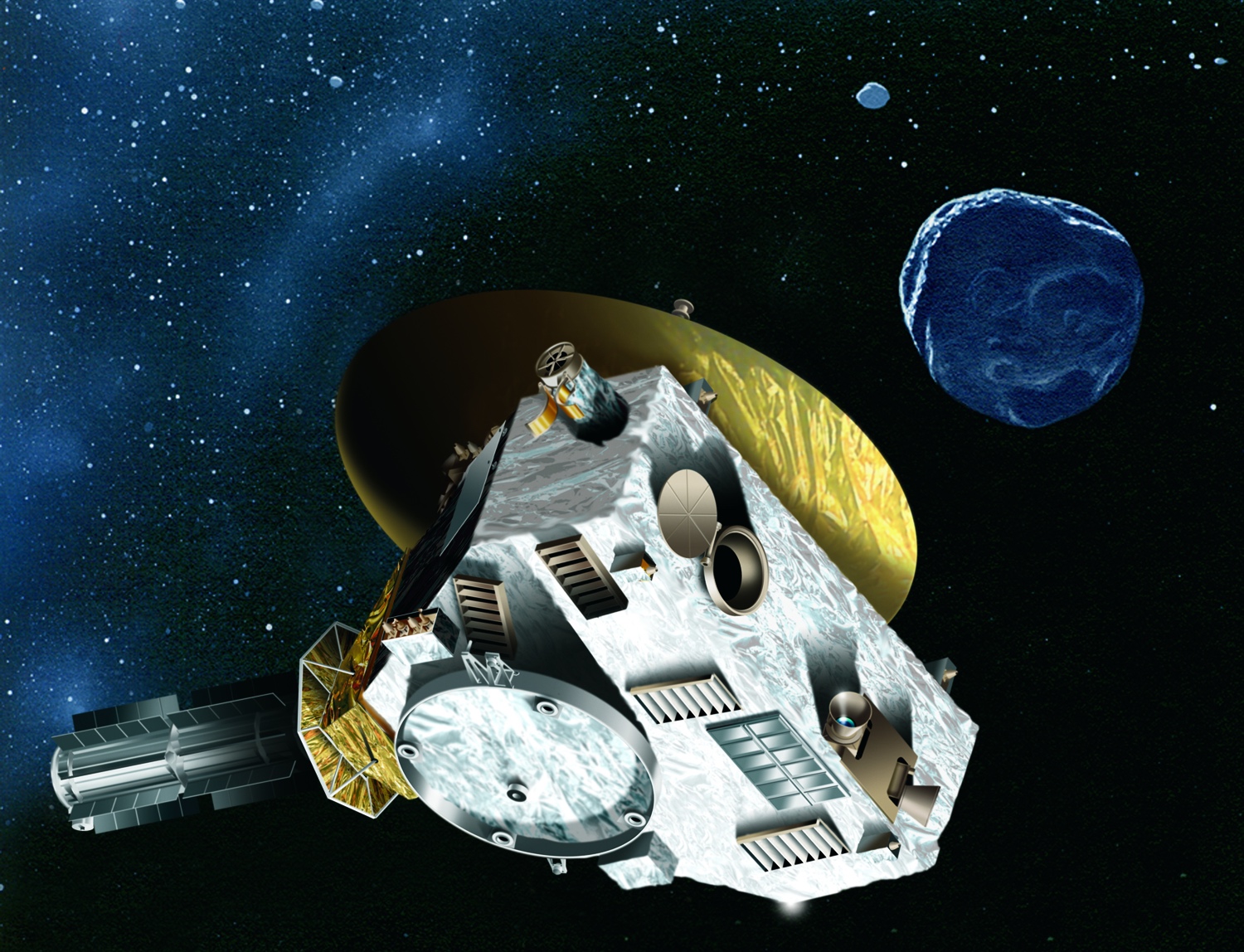Products You May Like
WASHINGTON — NASA has agreed to extend operations of its New Horizons spacecraft through late this decade to support “multidisciplinary” science that could include another Kuiper Belt object flyby.
NASA announced Sept. 29 that it would extend New Horizons, currently approved for operations through the end of fiscal year 2024, until the spacecraft exits the Kuiper Belt, which is expected around the end of the decade. The focus of the mission, starting in fiscal year 2025, will be collecting heliophysics data as the spacecraft heads out of the solar system.
The arrangement, though, would allow the spacecraft to perform another Kuiper Belt flyby, like the flyby of Arrokoth it conducted in early 2019. While there are currently no known objects within range of New Horizons, “this new path allows for the possibility of using the spacecraft for a future close flyby of such an object, should one be identified,” NASA said in a statement announcing the extension.
“The New Horizons mission has a unique position in our solar system to answer important questions about our heliosphere and provide extraordinary opportunities for multidisciplinary science for NASA and the scientific community,” said Nicola Fox, associate administrator of science at NASA, in the agency statement. “The agency decided that it was best to extend operations for New Horizons until the spacecraft exits the Kuiper Belt, which is expected in 2028 through 2029.”
The future of New Horizons has been in doubt after NASA elected to extend the mission, part of NASA’s planetary science division, only through 2024, proposing to then transfer it to NASA’s heliophysics division. That move was rejected by the mission’s principal investigator, Alan Stern of the Southwest Research Institute, who argued that the move would rule out any further work in planetary science by the original mission team.
“We think that this is shortsighted,” he said at a meeting of the Outer Planets Assessment Group, a NASA advisory committee, in May. “It was the only mission ever sent and the only mission planned to study the Kuiper Belt, and we’re still there.”
He said the project team had declined to submit a proposal for that heliophysics-only mission, putting NASA into a quandary, although both agency officials and Stern said in May that it did not mean the mission would end after 2024.
Stern, in a social media post after the NASA announcement, thanked Fox and the agency for its decision on a new extended mission. “We are excited to continue the exploration of the Kuiper Belt and the outer heliosphere, two amazing science areas NASA is pioneering,” he said.
NASA said that the new extended mission will be jointly managed by NASA’s heliophysics and planetary science divisions, but “primarily” funded by planetary science.
“NASA will assess the budget impact of continuing the New Horizons mission so far beyond its original plan of exploration,” the agency stated, noting that the extension could impact research and analysis funding for the New Frontiers line of planetary missions that includes New Horizons. NASA added that “future projects may be impacted.”
NASA spent $9.5 million on New Horizons in 2022 and proposed spending $9.7 million on the mission in its fiscal year 2024 budget proposal.
